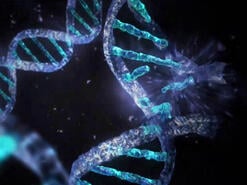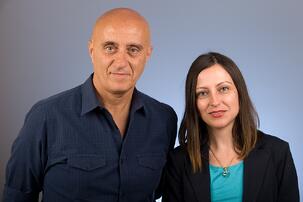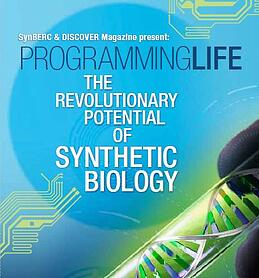The University of California, San Francisco was recently ranked number two in the country for receiving biomedical research grants from the NIH, and it was also the number one ranked public school in the country for receiving these grants. According to the University of California, San Francisco news page, this funding allows UCSF researchers to undertake groundbreaking studies that aim at a better understanding of cancer, diabetes, HIV, Parkinson’s, Alzheimer’s and cardiovascular disease.
Tags: 2014, CA, University of California San Francisco, 2013, University of California San Francisco Parnassus, Southwest, California, San Francisco, SFVS, Biotechnology Vendor Showcase, UCSF, UC San Francisco, Parnassus
The University of California, Riverside was recently guaranteed $15 million a year in continuous funding for the University’s much anticipated medical school when Governor Jerry Brown signed the state’s budget on June 27th. The University of California, Riverside’s medical school will be the first new public medical school on the West Coast in almost 50 years and is expected to be a powerful economic force on the region. The school will also help address the low doctor-to-patient ratio in the region.
Tags: 2014, CA, 2013, University of California Riverside, Southwest, California, University of California, BioResearch Product Faire Event, Riverside, UC Riverside, UCR
 In what is being hailed as a victory for both scientific research and patients' rights, the Supreme Court ruled unanimously yesterday that human genetic material cannot be patented. The case, Association for Molecular Pathology v. Myriad Genetics, has been working its way through the court system for a number of years now, led by plaintiffs including the ACLU, the American College of Medical Genetics, the American Society for Clinical Pathology, and numerous prominent genetic research scientists. The verdict invalidates the patents Myriad Genetics has held on breast cancer genes BRCA1 and BRCA2 since the 1990's and allows other labs besides theirs to test for mutations in those genes which, when present, strongly indicate a genetic predisposition to cancer. It also means that scientists can move forward in their genetic research without threat of being sued for copyright infringement. While the case was brought against Myriad specifically, the decision to disallow human gene patenting has profound implications for both scientific discovery and individual rights of ownership over our own genetic material.
In what is being hailed as a victory for both scientific research and patients' rights, the Supreme Court ruled unanimously yesterday that human genetic material cannot be patented. The case, Association for Molecular Pathology v. Myriad Genetics, has been working its way through the court system for a number of years now, led by plaintiffs including the ACLU, the American College of Medical Genetics, the American Society for Clinical Pathology, and numerous prominent genetic research scientists. The verdict invalidates the patents Myriad Genetics has held on breast cancer genes BRCA1 and BRCA2 since the 1990's and allows other labs besides theirs to test for mutations in those genes which, when present, strongly indicate a genetic predisposition to cancer. It also means that scientists can move forward in their genetic research without threat of being sued for copyright infringement. While the case was brought against Myriad specifically, the decision to disallow human gene patenting has profound implications for both scientific discovery and individual rights of ownership over our own genetic material.
Tags: 2014, CA, 2013, Bioresearch, gene patenting, cancer research, Southwest, Southwest life science marketing events, Cancer Treatment, San Diego, SDVS, Genetics, UC San Diego, biotech industry, Biotechnology Vendor Showcase

Your body's circadian clock is responsible for making sure you stay healthy, by regulating metabolism and carrying out internal housekeeping chores on a steady 24-hour schedule. About 15% of genes are controlled by your bodily clock, including some important ones in your intenstines that keep infectious bacteria like salmonella in check. Dr. Paolo Sassone-Corsi is a professor of biological chemistry at the UC Irvine School of Medicine and Director of UCI's Center for Epigenetics and Metabolism. Together with his colleague, microbiologist Manuela Raffatellu of UCI's Institute for Immunology, the Irvine bio research team has recently published an article in PNAS revealing how the immune system, specifically as it works in your intestinal track, is strongly directed by circadian rhythms. Upset that biological timing and you put yourself at greater risk of getting sick.
[Drs. Sassone-Corsi and RAffatellu, courtesy of Jocelyn Lee / University Communications at UCI]
Tags: 2014, CA, 2013, University of California Irvine, Immunology, epigenetics, Southwest, California, University of California, Immune System, BioResearch Product Faire Event, Irvine, UCI, biological clock
One of the reasons cancer is so successful and difficult to treat is that it uses the body's own systems to proliferate, thrive, and hide from attack. Bioresearch scientists out to target cancer are taking a similar approach, building tiny bio-vehicles for locating tumors that reach their destination without setting off a massive immune system alarm or flooding the whole body with toxic chemicals. A team of biochemists at the University of California San Diego led by Dr. Nathan Gianneschi has developed a nanoparticle that assumes a benign shape to travel covertly through the blood system, then, recognizing a tumor, reassembles via an enzymatic cue into a net to attach itself to the cancerous target.
Tags: 2014, CA, University of California San Diego, 2013, Nanobiotechnology, cancer research, Southwest, California, University of California, San Diego, SDVS, BioResearch Product Faire Event, UCSD, Biotechnology Vendor Showcase
 As humans, our bodies have the ability to naturally regenerate both skin and hair, but we only get two sets of teeth, and that's one set more than many other mammals. Reptiles and fish, on the other hand, have the ability to regrow teeth throughout their lifetime. Though we have guessed that specialized stem cells are involved, the cellular and molecular mechanisms behind tooth renewal in these animals have not been well understood until now. A research team at the University of Southern California's Keck School of Medicine, led by Dr. Cheng-Ming Chuong, has recently published an article in PNAS detailing their study into the regrowth of alligator teeth. They chose a crocodilian model because the dentition is well-organized and implanted in sockets of the dental bone, similar to that of mammals (if more extensive) yet with the capacity for renewal. Contributors to the research included colleagues in Georgia, China, and the Louisiana Department of Wildlife and Fisheries, who presumably provided the live research subjects.
As humans, our bodies have the ability to naturally regenerate both skin and hair, but we only get two sets of teeth, and that's one set more than many other mammals. Reptiles and fish, on the other hand, have the ability to regrow teeth throughout their lifetime. Though we have guessed that specialized stem cells are involved, the cellular and molecular mechanisms behind tooth renewal in these animals have not been well understood until now. A research team at the University of Southern California's Keck School of Medicine, led by Dr. Cheng-Ming Chuong, has recently published an article in PNAS detailing their study into the regrowth of alligator teeth. They chose a crocodilian model because the dentition is well-organized and implanted in sockets of the dental bone, similar to that of mammals (if more extensive) yet with the capacity for renewal. Contributors to the research included colleagues in Georgia, China, and the Louisiana Department of Wildlife and Fisheries, who presumably provided the live research subjects.
Tags: 2014, CA, 2013, University of Southern California, Regenerative Medicine, Stem cell research, Southwest, California, USC, Los Angeles, biology research, BioResearch Product Faire Event, Front Line event
 Researchers at the Broad Center of Regeneration Medicine and Stem Cell Research on the Parnassus Campus of the University of California San Francisco have just published the results of two related studies involving differentiated brain cells transplanted into mice. In one case, the cells were human brain cells integrated successfully into a mouse brain; in the other, epileptic mice were cured with specialized mouse brain cells. In both studies the differentiated cells were a type of interneuron progenitor called medial ganglionic eminence (MGE) cells. Unlike other brain stem cells that can turn into any number of specialized cells, these differentiated MGE cells have a specific function, which is to inhibit signaling in overactive nerve circuits. These experiments hold promise for future treatment of neurological disorders like Parkinson’s disease, Alzheimer’s, epilepsy, and the chronic pain and spasticity caused by spinal cord injury.
Researchers at the Broad Center of Regeneration Medicine and Stem Cell Research on the Parnassus Campus of the University of California San Francisco have just published the results of two related studies involving differentiated brain cells transplanted into mice. In one case, the cells were human brain cells integrated successfully into a mouse brain; in the other, epileptic mice were cured with specialized mouse brain cells. In both studies the differentiated cells were a type of interneuron progenitor called medial ganglionic eminence (MGE) cells. Unlike other brain stem cells that can turn into any number of specialized cells, these differentiated MGE cells have a specific function, which is to inhibit signaling in overactive nerve circuits. These experiments hold promise for future treatment of neurological disorders like Parkinson’s disease, Alzheimer’s, epilepsy, and the chronic pain and spasticity caused by spinal cord injury.
Tags: 2014, CA, University of California San Francisco, 2013, University of California San Francisco Mission Bay, University of California San Francisco Parnassus, Parkinson's Disease Research, Southwest, California, University of California, brain research, San Francisco, SFVS, Biotechnology Vendor Showcase, UCSF, Parnassus, Mission Bay
Bioengineers at the University of California San Diego have come up with a novel way of removing dangerous toxins from the bloodstream using biomimetic nanosponges. These tiny clean-up particles work by posing as red blood cells, which serves both to evade the body's immune system response to foreign invaders and to attract the toxins to themselves instead of to actual red blood cells. When the toxins have all attached themselves to the nanosponges, they are processed out through the liver without harming the body. The research into this promising therapy comes out of the Zhang Lab in the Jacobs School of Engineering, where in 2011 they pioneered the red blood cell disguise technology for cloaking cancer drug cocktails, allowing the drugs much more time in the body to target diseased cells. Dr. Liangfang Zhang is also on the research faculty of the UCSD Moores Cancer Center.
Tags: 2014, CA, University of California San Diego, 2013, nanoparticle, Nanobiotechnology, nanotechnology, Nanoscience, Southwest, California, University of California, Cell Research, San Diego, SDVS, UCSD, Biotechnology Vendor Showcase
The NIH has just announced $5.3M in two new awards through the Autism Centers of Excellence (ACE) program to support autism research studies led by two University of California investigative teams, at UCLA and the UC Davis Medical Center MIND Institute. ACE funding is earmarked for large, multi-disciplinary studies into the origins of autism spectrum neurological disorders and avenues for their treatment. In the case of the two latest awardees, one is a clinical behavioral study and one is a study of genetic variants. The $5.3M is initial one-year funding, with extensions of up to five years. The ACE program includes both centers and networks. Centers are made up of multiple investigators at one site working together on a specific research problem; networks include investigative teams from different sites engaged in a focused study. Both UCLA and UC Davis are ACE centers and will lead the current research projects, though in collaboration with colleagues at other research institutions, namely Harvard, UW, Vanderbilt, Emory, Johns Hopkins, and Yale. As with all ACE research, data and findings are collected centrally by the NIH to maximize their availability to the larger research community.
Tags: 2014, CA, 2013, Southwest, Los Angeles, Autism, LAVS, UCDMC, BioResearch Product Faire Event, Funding, UCLA, Genetics, Research, Sacramento, Davis, NIH funding, UC Los Angeles, UC Davis, Biotechnology Vendor Showcase Event
 Synthetic biology is the application of engineering principles to altering components of biological systems, like genes and cells, towards creating new and revised living things (watch the video below for an introduction). It's arguably the most radical, cutting-edge laboratory science field today, and one that calls on its scientists to grapple with ethics as well as biotechnology. At the forefront of this life science revolution is the University of California Berkeley-led consortium SynBERC: the Synthetic Biology Engineering Research Center, with partner colleagues at UCSF, Stanford, MIT, and Harvard. Just this week, principal synbio investigators from these institutions came together with industry scientists and ethicists for a symposium on the UCB campus titled Programming Life: the revolutionary potential of synthetic biology, co-sponsored by SynBERC and Discover Magazine. Whether we are going to continue down the road of reengineering life was not the question so much as how we will go about that delicate task and what the implications and promises are of such a bold project.
Synthetic biology is the application of engineering principles to altering components of biological systems, like genes and cells, towards creating new and revised living things (watch the video below for an introduction). It's arguably the most radical, cutting-edge laboratory science field today, and one that calls on its scientists to grapple with ethics as well as biotechnology. At the forefront of this life science revolution is the University of California Berkeley-led consortium SynBERC: the Synthetic Biology Engineering Research Center, with partner colleagues at UCSF, Stanford, MIT, and Harvard. Just this week, principal synbio investigators from these institutions came together with industry scientists and ethicists for a symposium on the UCB campus titled Programming Life: the revolutionary potential of synthetic biology, co-sponsored by SynBERC and Discover Magazine. Whether we are going to continue down the road of reengineering life was not the question so much as how we will go about that delicate task and what the implications and promises are of such a bold project.
Tags: 2014, CA, 2013, University of California Berkeley, biofuels, synthetic biology, Southwest, California, University of California, genetic engineering, Berkeley, BioResearch Product Faire Event, Research, Berkeley Labs, UCBerk, UC Berkley

